The Junkers Ju 87 or also simply known as Stuka was the German air force’s dive bomber and the ground attack fighter plane which was designed by a designer named Hermann Pohlmann. The aircraft took its first flight back in 1935 and was entered into service back in 1937. The aircraft was entered in the Condor Legion of Luftwaffe and took part in the Spanish Civil War as well as served for the Axis powers during World War II.
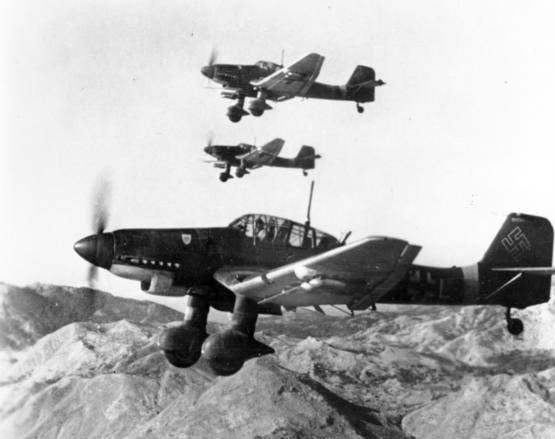
The Junkers Ju 87 Stuka was recognizable with its gull wings and the spatted undercarriage along with the Jericho Trumpet being mounted on the aircraft’s main gear leg. These were wailing sirens which became the propaganda symbol for the German Air Force and their so-called victories for Blitzkrieg. The aircraft also featured drive brakes under its wings to allow the aircraft to recover easily from the dive attacking form even if the pilot suffered from the increased G forces.
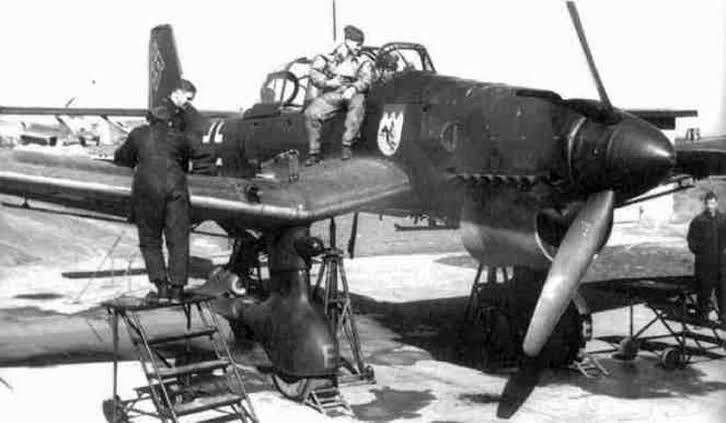
The Junkers Ju 87 Stuka proved to be of valuable service for the German forces for the close air support missions as well as for anti-shipping ones at the start of World War II. The Junkers Ju 87 Stuka was the aircraft that made the conquest of Netherlands, Norway, France, and Belgium an easy thing for the Axis forces back in 1940. Still, due to lack of firepower, it could not endure the brunt of the Battle of Britain and suffered heavy losses.

The Junkers Ju 87 Stuka was retired after World War II ended with the loss of Germany and its allies.
The designation Stuka:-
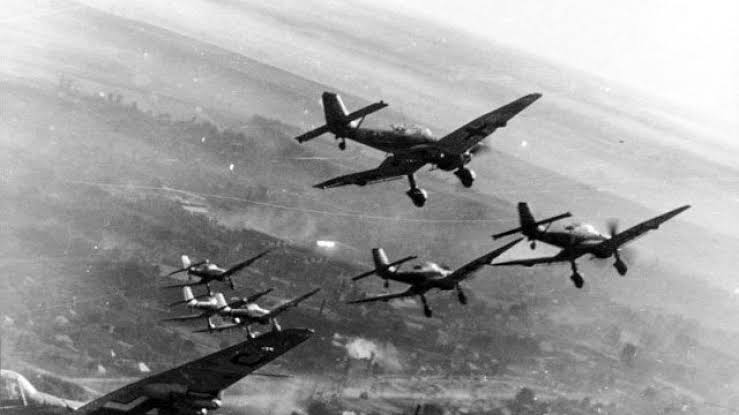
The designation Stuka in the name of Junkers Ju 87 Stuka comes from the aircraft’s long name Sturzkampfflugzeug, which translates into English as “Drop Down Fight Airplane”.
Origin and Development:-
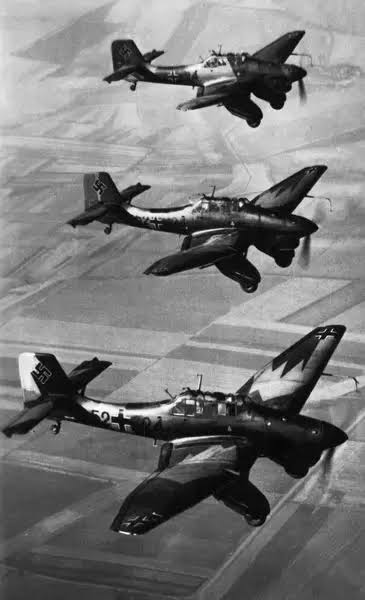
The work on the design of the Junkers Ju 87 Stuka was started way back in 1933 under the Sturzbomber Programm. The aircraft was designed to receive power from the British made Rolls Royce Kestrel engine and Junkers ordered nearly 10 of these engines back on April 19th, 1934. The very first prototype of the Junkers Ju 87 Stuka was manufactured in complete secrecy by Germany in Sweden and then brought back in the same secret manner to Germany back in 1934. Nearly 5 prototypes of this aircraft were produced but the most perfect of them all was the Ju 87 V1 W.Nr. 4921. This prototype took it to the skies on September 17th, 1935.
Entry into Luftwaffe:-
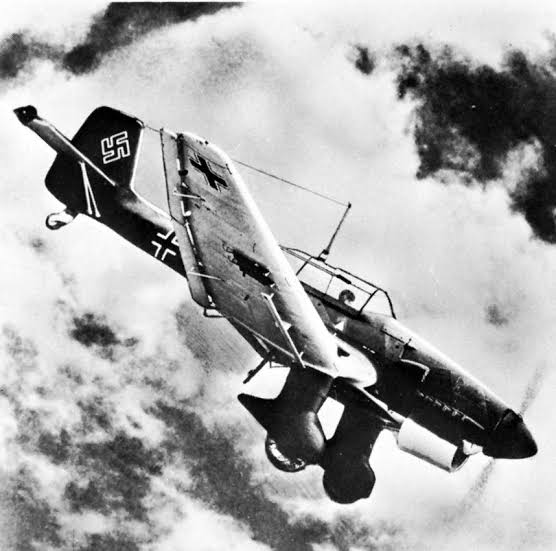
The aircraft was approved by the German officials and the aircraft was entered into the service of Luftwaffe back in 1937 but it was not until 1939 when the World War II started that the aircraft made its debut. These aircraft provides to be the main asset that quickened the German invasion of Poland. The aircraft was soon feared to be a deadly force all because of its precision striking ability. The aircraft then went on to serve the German forces and their allies invading Norway, Belgium, and France which then led the path to the Battle of Britain where the Junkers Ju 87 Stuka again served on front lines.
Suffered massive losses in Battle Of Britain:-
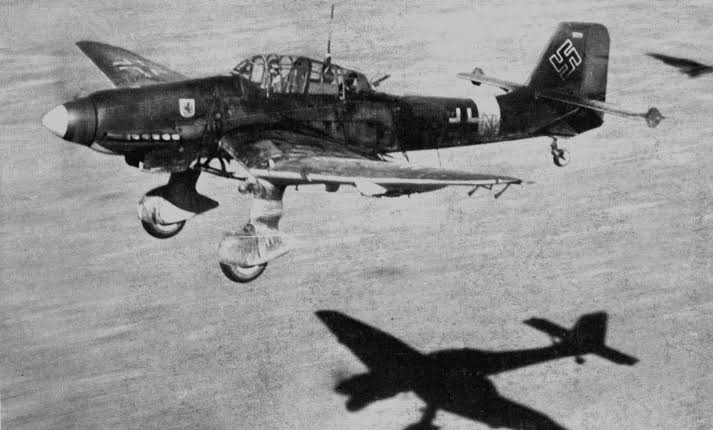
During the Battle of Britain, the Junkers Ju 87 Stuka suffered from major losses. The reason was that the British fighter pilots were disciplined enough to take on the attacking dive bombers unless these Junkers Ju 87 Stuka aircraft were escorted by their own fighters which had not been the case. Suffering numerous losses, the Junkers Ju 87 Stuka was pulled by Luftwaffe from this aggressive war service for the Battle of Britain. The battle ended in a win for Britain and for the German forces, which was the first major defeat of their World War II campaign.
Model nicknamed Tank Buster:-
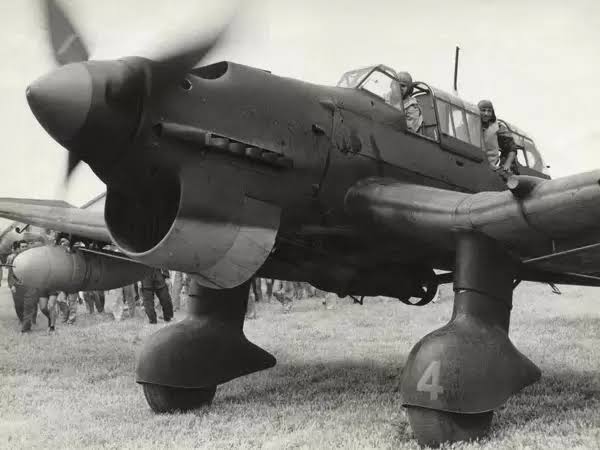
Luftwaffe decided to cover up the limitations of the Junkers Ju 87 Stuka and this created a model designated as Ju 87D which was sent for service on the Eastern Front and for the invasion campaign in North Africa.
The most notable variant of the Junkers Ju 87 Stuka was designated as Ju 87G which was nicknamed as Tank Buster that had been armed with 2 cannons of 37mm. this particular model proved to be a new lifeline to the Ju87 series and also provide to be one of the most successful designs during the war.
Design:-

The Junkers Ju 87 Stuka was manned by 2 crew members; one pilot and one rear-seated gunner under a single glazed canopy. The machine gunner would man 2 machine guns of 7.92mm that were mounted at the rear of the aircraft to defend tits vulnerable Six. The undercarriage of the Junkers Ju 87 Stuka was not like any other aircraft of its era as it flew with a fixed undercarriage that would create drag but would still reduce the repair times and complexities of using it.
Powerplant:-

A Junkers Ju 87 Stuka was powered by a single Jumo 211J-1 inverted-V radial piston engines which would provide the aircraft with 1400 horsepower. This power was used to drive the aircraft’s three-blade propeller to fly it at a top speed of 255 mph for a range of 954 miles at a service ceiling of 23917 feet.
Damage dealt to Allied Naval Forces:-
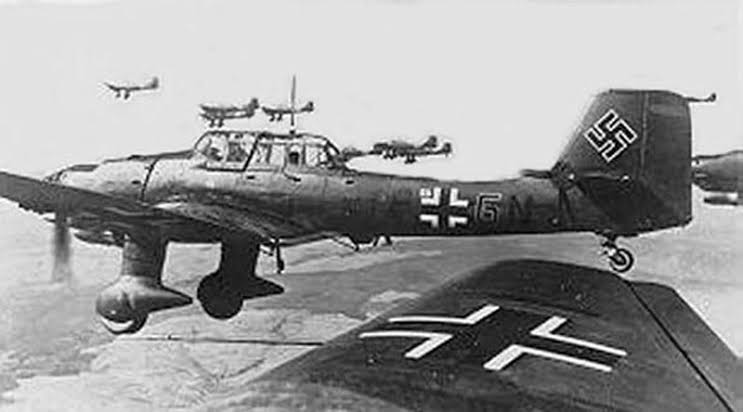
The best performance ever mustered out of the Ju-87 was done by the German ace pilot Oberst Hans-Ulrich Rudel who was credited with the sinking of Allied Navy’s three major ships; 1 battleship, 1 destroyer, and 1 cruiser, along with almost 519 of the armored vehicles which mostly included combat tanks.
Other operators:-

In addition to Luftwaffe, the Junkers Ju 87 Stuka was also used by many other nations; either during the war or after it. The names of these other operators of Junkers Ju 87 Stuka are as follows.
- Bulgaria, Czechoslovakia, Croatia (captured subjects after the war)
- UK, Spain, Slovak Republic, Japan, Hungary, Italy, and Romania (seized test subjects)
- United States (Single aircraft)
- Yugoslavia (after war captured subjects)
Total numbers produced:-

The aircraft was started for mass production back in the late 1937 and was produced until late 1943. During these years, nearly 6500 of these Junkers Ju 87 Stuka aircraft were manufactured for Germany and its allied forces.
Retirement:-
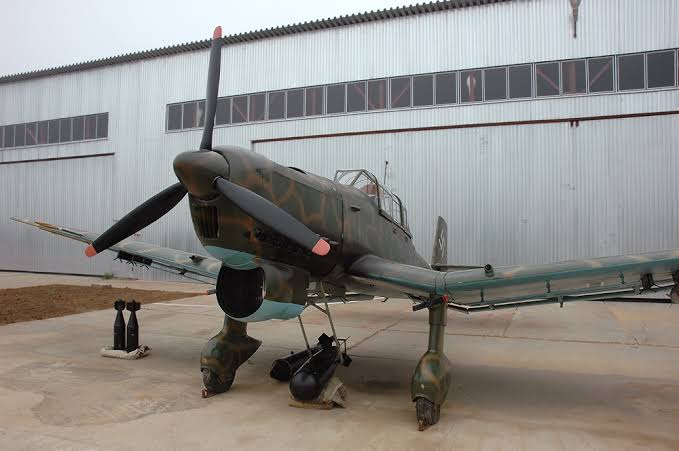
The aircraft made its debut at the start of World War II and seeing its usefulness the aircraft was used by its primary operator Luftwaffe until the final year of the war in 1945.
Related Content
Interesting facts about the Douglas A-24 Banshee; The US Military’s Dive Bomber
Interesting facts about Antonov An-124 Ruslan; The Largest Russian Military Cargo Transport Aircraft




